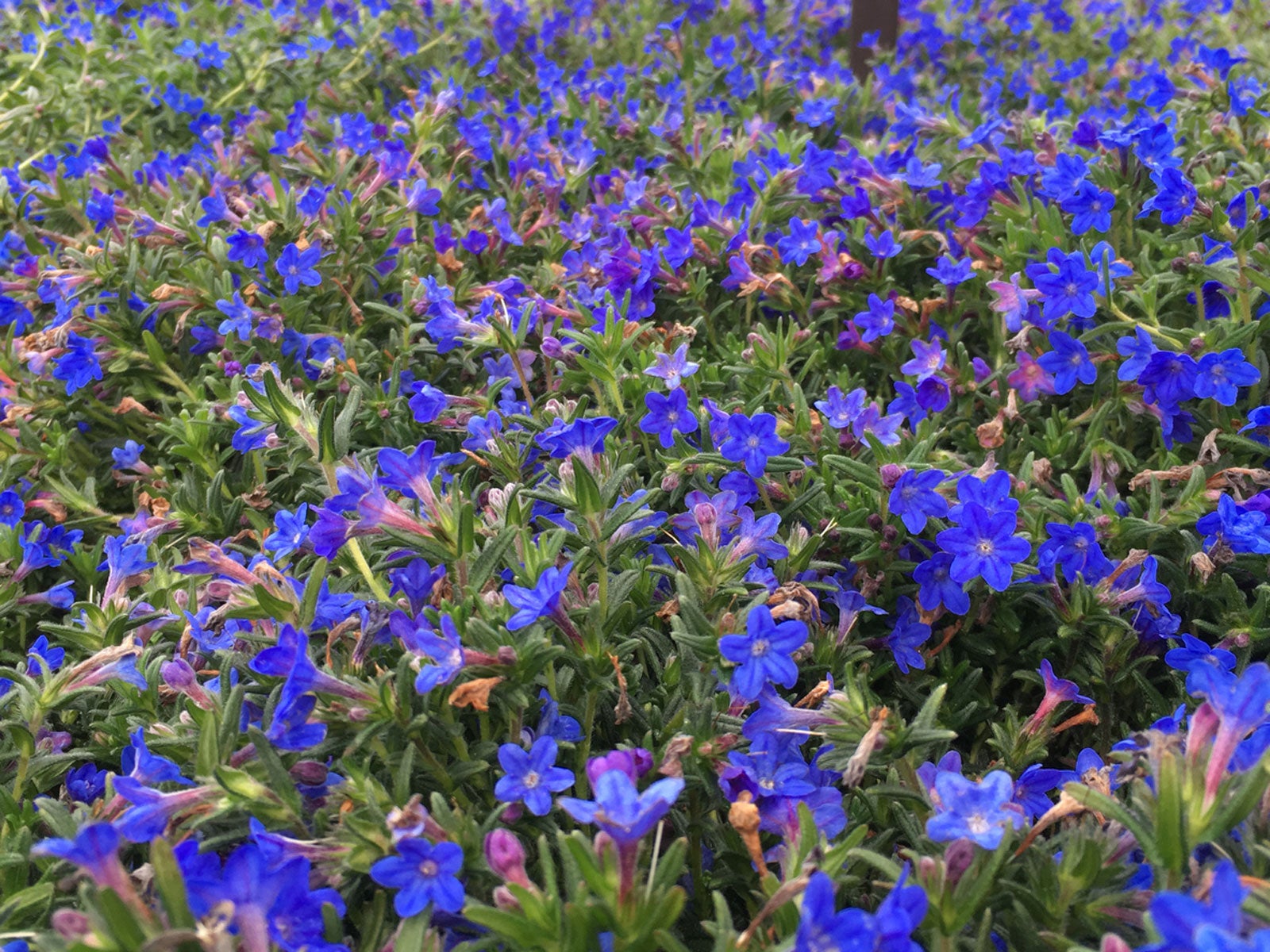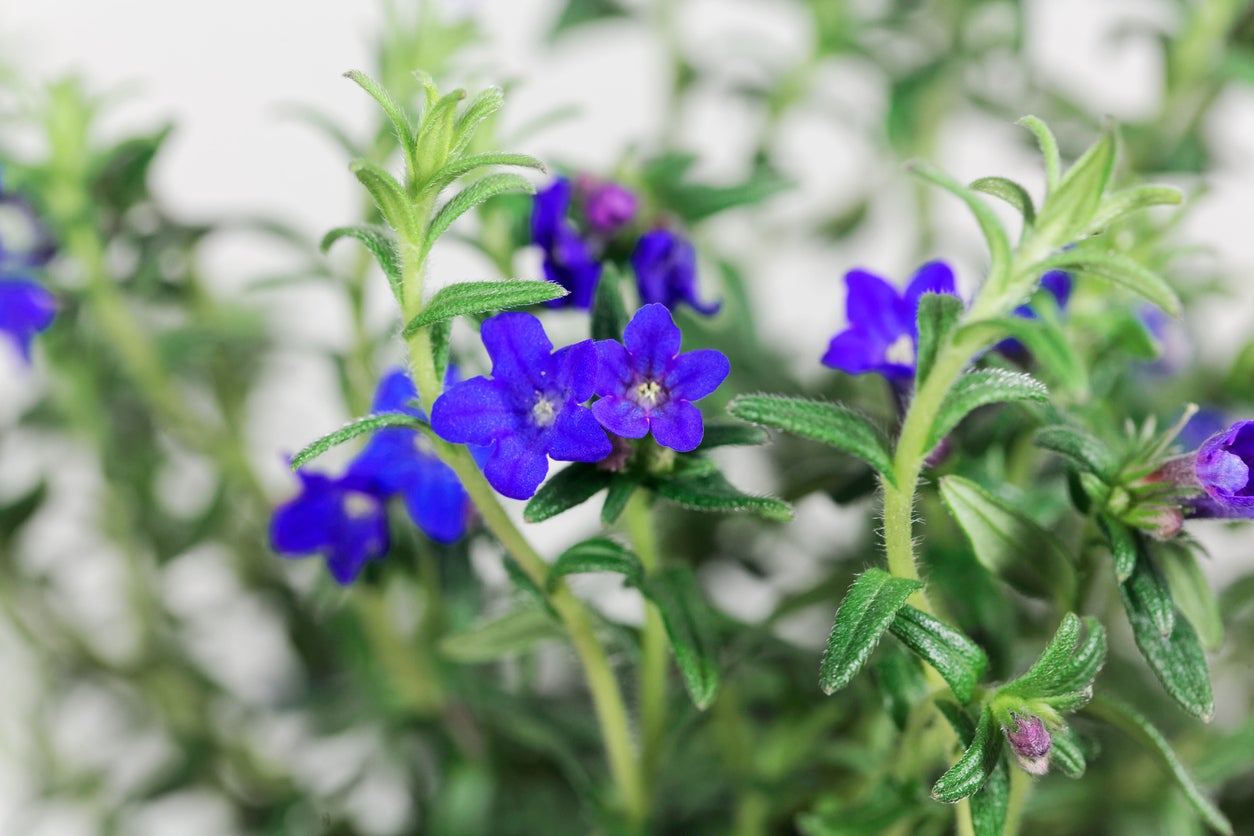What Is Lithodora – Learn About The Care Of Lithodora In Gardens


What is Lithodora? Botanically known as Lithodora diffusa, this plant is a hardy groundcover that produces masses of tiny, intensely blue, star-shaped flowers from late spring throughout most of summer. Want to know more about growing Lithodora groundcover? Read on to find out.
Lithodora Plant Information
Lithodora planted in gardens reaches heights of only 6 to 10 inches (15-25 cm.), but a single plant can eventually spread 24 to 36 inches (61-91 cm.). You can easily grow Lithodora in gardens in USDA plant hardiness zones 6 through 10. In the more southern ranges, the dense covering of narrow, dark green leaves remains green year-round.
Lithodora groundcover is a great choice for rock gardens. It also works well in window boxes or containers.
Lithodora is relatively easy to find in garden centers. Otherwise, plant Lithodora seeds directly in the garden, or start them indoors a few weeks ahead of time. You can also propagate cuttings from established plants in mid to late summer.
Growing Lithodora Groundcover
Acidic, well-drained soil is best for growing Lithodora in gardens. Sandy soil is fine, but the plant won’t tolerate heavy clay soil.
Although Lithodora thrives in full sunlight, partial shade isn’t a problem. Afternoon shade is best in hot climates.
As for the care of Lithodora, water the plant regularly and don’t allow the soil to become bone dry. However, beware of overwatering and avoid soggy, waterlogged soil.
Gardening tips, videos, info and more delivered right to your inbox!
Sign up for the Gardening Know How newsletter today and receive a free copy of our e-book "How to Grow Delicious Tomatoes".
Apply mulch in autumn if you live in a cooler region. Prune Lithodora lightly if it looks straggly, or if the leaves are damaged by winter cold.
Lithodora generally requires no fertilizer unless the leaves turn pale greenish yellow. If this occurs, provide a fertilizer for rhododendron, azalea, or other acid-loving plants in late winter or very early spring.
If you notice aphids, treat the plant with insecticidal soap spray. Otherwise, pests are usually not a problem.

A Credentialed Garden Writer, Mary H. Dyer was with Gardening Know How in the very beginning, publishing articles as early as 2007.
-
 Terrifically Tubular Flowers For Hummingbirds: 9 Tube-Flowered Plants To Attract Hummers
Terrifically Tubular Flowers For Hummingbirds: 9 Tube-Flowered Plants To Attract HummersGrowing tubular flowers for hummingbirds helps you create the optimum feeding conditions for your winged friends. Here are nine tubed delights for hummers
By Tonya Barnett
-
 How To Grow Hydroponic Tomatoes For Fresh Indoor Harvests – No Soil Required
How To Grow Hydroponic Tomatoes For Fresh Indoor Harvests – No Soil RequiredLearning how to grow tomatoes in water is easy and allows you to harvest fresh-home-grown produce in every season without any mess.
By Ellen Wells
-
 Lithodora Cold Tolerance: How To Overwinter Lithodora Plants
Lithodora Cold Tolerance: How To Overwinter Lithodora PlantsLithodora is a beautiful blue flowered plant. There are several varieties available and all tend to spread to make lovely ground covers. It enjoys cooler climates but is only half hardy. For more information about overwintering lithodora plants, click the following article.
By Bonnie L. Grant
-
 Lithodora Trimming: When And How To Prune Lithodora Plants
Lithodora Trimming: When And How To Prune Lithodora PlantsLithodora requires little maintenance to thrive. Beyond consistent schedules of irrigation and fertilization, learning to properly trim and prune lithodora plants will help to ensure healthy plants for many seasons to come. Click here for tips on how to prune lithodora plants.
By Tonya Barnett